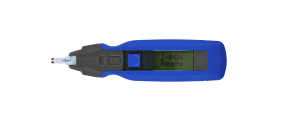The polishing machine consisted of two industrial polishing wheels, controlled by way of a foot pedal allowing the operator safe use of both hands, and numerous different grades of polish blocks. Too harsh a polish at the wrong stage would spoil the final result. Alternatively, too fine a polish, too early in the process, would lengthen the time taken to achieve the end result, thus rendering the final completed frames more expensive to manufacture.
Perpendicular to the polishing station was the hand sand-blaster. This resembled a piece of lab equipment from the film “Outbreak.” A transparent fronted box with two entrance holes attached to thick, rubberized, internal, self-contained gloves used to hold the apparatus being treated (sand-blasted). Tom explained that doing this by hand required proper training, but well worth it, as the finish achieved was far superior to a mass-produced product.
Behind us was a couple of work benches where an experienced spectacle maker was hand-finishing the ready-to-wear frames ensuring all edges and joints where “square” and smooth when running your finger across it. “It’s what all Opticians expect when they’re selecting their frame stock. The better the joint, the better the finished spectacles.”
Around the corner to the next set of benches was the lug insertion machine. Tom had pioneered the use of a low melting-point metal alloy to cast a die to hold the frame front in the correct position in order to heat-sink the lug into the acetate front of the spectacles if not riveted. The alloy die could be produced in minutes, unlike the previous method of machining the die. This again allowed more cost-effective production of bespoke frames. Tom was proud to say that this method has been adopted by most of the spectacle industry.



